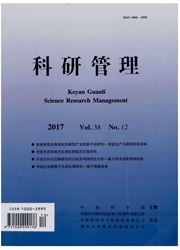

 中文摘要:
中文摘要:
考虑由一个品牌商品制造商和一个传统零售商组成的两级供应链系统,制造商具有开启电子直销渠道的选择,然而电子渠道具有假货渗透的风险。文章采用Stackelberg博弈方法来分析品牌商品制造商的双渠道策略及对传统零售商经营决策的影响,并进一步分析了消费者剩余和社会福利的变化。研究结果表明,只有当电子渠道假货渗透率和假货质量在一定范围内,品牌商品制造商倾向双渠道经营来增加自身利润,而超出这个范围单渠道经营对品牌商品制造商更有利。然而,在这个范围内,消费者剩余和社会福利增加。更重要的是,电子渠道假货的存在会加重渠道冲突,是电子直销渠道损害传统零售商利润的又一重要因素。
 英文摘要:
英文摘要:
In this paper, we study the two - stage supply chain system consisting of one manufacturer and one traditional retailer. The manufacturer has the choice of adding electronic direct channel. However, the electronic channel has the risk of counterfeits. Stackelberg game method is used in this paper to analyze the channel strategy for brand goods manufacturer and the effects on the traditional retailer, furthermore, the changes of consumer surplus and social welfare. The results show that, only when the quality and market permeability of counterfeits are within a certain range, the brand goods manufacturer tends to add an electronic channel and operate in dual -channel to increase profits; but single channel is much better for brand goods manufacturer when the quality and market permeability of counterfeits beyond the scope. Nevertheless, when the counterfeits within the range, the consumer surplus and social welfare increase. More importantly, counterfeits in electronic channel aggravate the channel conflict. It is another important effect on damaging the traditional retailer' s profits which is caused by the electronic direct channel.
 同期刊论文项目
同期刊论文项目
 同项目期刊论文
同项目期刊论文
 期刊信息
期刊信息
